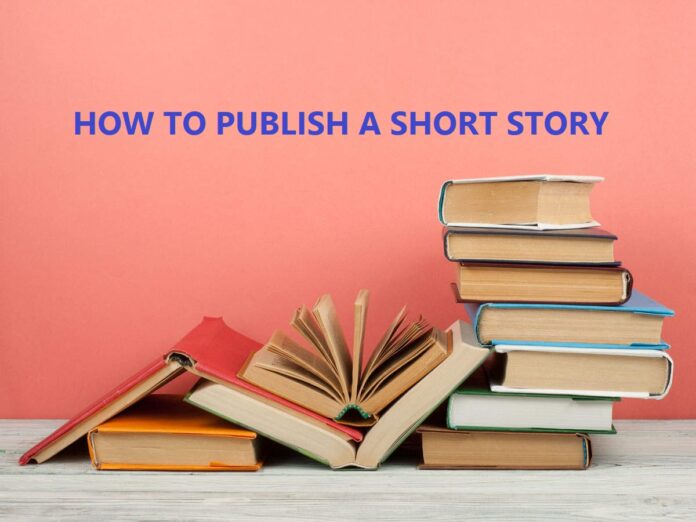The allure of short stories lies in their ability to captivate readers with their powerful impact in a concise format. Crafting a short story that lingers in the reader’s mind is an art form that requires careful consideration and skill.
In this article, we will explore key tips and strategies on how to publish a short story that leaves a lasting impression on your audience.
Understanding the Power of Short Stories
Short stories are an art form that thrives on brevity, allowing writers to captivate readers within a limited word count. The advantages of writing and publishing short stories are numerous, benefiting both writers and readers.
For writers, short stories offer a chance to experiment and flex their creative muscles within the confines of a shorter format.
For readers, short stories provide an accessible and engaging reading experience that can be enjoyed in a single sitting.
Identify Your Core Message
To create a short story that leaves a lasting impression, it’s crucial to define the central theme or message you want to convey.
A clear and compelling idea will resonate with readers and make your story memorable. Identifying a strong core message is essential in crafting a story that stays with readers long after they’ve finished reading.
Craft Engaging Characters
Developing well-rounded and relatable characters within the constraints of a short story is a challenging yet rewarding task. Memorable protagonists and antagonists drive the narrative forward and keep readers invested in the story.
Utilize vivid descriptions and subtle nuances to bring your characters to life in a limited space, ensuring they leave a lasting impression on readers.
Mastering Plot and Structure
A tight and compelling plot is essential in maintaining reader engagement throughout your short story. Effective pacing and narrative structure will help maximize the impact of your story within its limited word count.
Incorporate plot twists and unexpected turns to leave readers with a lasting impression, ensuring your story is both engaging and memorable.
Creating Evocative Settings
Descriptive language is a powerful tool in evoking a vivid sense of place within your short story. Choose settings that enhance the story’s atmosphere and complement the central theme.
Striking a balance between detail and brevity is key to creating immersive and impactful settings that enrich your story and captivate readers.
Mastering Dialogue and Subtext
Realistic and engaging dialogue is crucial in revealing character and advancing the story. Utilize subtext and implied meaning to add depth and complexity to conversations, making them more intriguing and thought-provoking.
Balance dialogue with narrative to maintain a dynamic pace and enhance the overall impact of your short story.
Editing and Polishing Your Short Story
Editing plays a crucial role in refining and perfecting your short story. Seek feedback from trusted beta readers or writing communities to gain valuable insights and suggestions for improvement.
Pay close attention to language, grammar, and punctuation to ensure a polished and professional finish to your story.
Finding the Right Publication Opportunities
Research literary magazines, journals, and online platforms that publish short stories to find the best fit for your work.
Understand submission guidelines and tailor your story accordingly to increase your chances of success. Consider entering contests and submitting to anthologies as additional avenues for publication.
Experimenting with Style and Voice
Short stories offer a unique opportunity for writers to experiment with various styles and voices.
Trying out different narrative techniques, point-of-view, or writing styles can help you find your unique voice and make your story stand out.
Readers will be drawn to stories that are fresh and distinct, so don’t hesitate to take risks and explore new ways of storytelling in this shorter format.
Utilizing Literary Devices
Incorporating literary devices such as symbolism, foreshadowing, or irony can add depth and layers to your short story.
These elements can enhance the overall impact of your story and leave readers pondering its meaning long after they’ve finished reading.
Be mindful not to overuse these devices, as they should complement the story rather than overpower it.
Building Tension and Suspense
To create a short story that leaves a lasting impression, it’s essential to build tension and suspense throughout the narrative.
Effective pacing, well-timed revelations, and carefully crafted conflict will keep readers on the edge of their seats, eager to discover the story’s resolution.
A gripping climax followed by a satisfying conclusion will ensure your story remains memorable.
Marketing and Promoting Your Short Story
Once your short story is published, it’s crucial to promote it effectively to reach a wider audience. Here are some tips on how to market and promote your short story:
- Build an author website: Create a professional website that showcases your work, provides information about you as an author, and offers a platform for readers to connect with you. Contact a local software development company to assist with all the essential steps needed for it.
- Utilize social media: Share your work on platforms like Twitter, Facebook, and Instagram, using relevant hashtags and engaging with fellow writers and readers.
- Join writing communities: Participate in online forums, social media groups, and local writing clubs to network with other authors and share your work.
- Submit to literary magazines and anthologies: Increase your visibility by submitting your short stories to reputable literary magazines and anthologies in your genre.
- Guest blog and write articles: Offer to write guest posts or articles for popular websites and blogs in your genre to showcase your writing skills and promote your short story.
- Attend literary events: Participate in book fairs, conferences, workshops, and readings to meet fellow writers, editors, and publishers, and promote your work.
- Network with influencers: Connect with book bloggers, reviewers, and influencers in your genre to help spread the word about your short story.
- Offer exclusive content: Provide bonus content, such as behind-the-scenes insights or additional stories, to entice readers and encourage them to share your work with others.
By employing these marketing strategies, you’ll increase your story’s exposure, build valuable connections, and pave the way for future opportunities in your writing career.
Recommendation
Best Self-Motivation Books to Boost Your Growth Journey
Publish Your Own Book: Top 10 Must-Do For Savvy Authors
The Charismatic Charlie Wade by Lord Leaf: Book Review
The Divorced Billionaire Heiress : Book Review
Conclusion by Fix The Life
By employing these tips and strategies, you’ll be well on your way to publishing a short story that leaves a lasting impression. The fulfillment and recognition that come with sharing your work make the effort worthwhile. Embrace the brevity and power of the short story format to captivate readers and make a lasting impact on their hearts and minds, while also honing your craft and building your writing portfolio.




